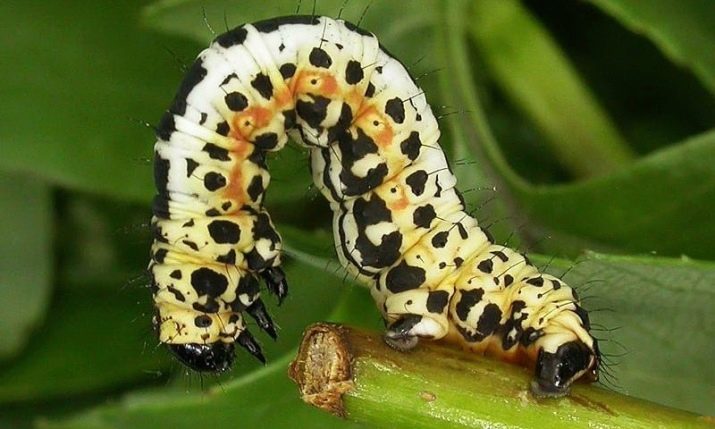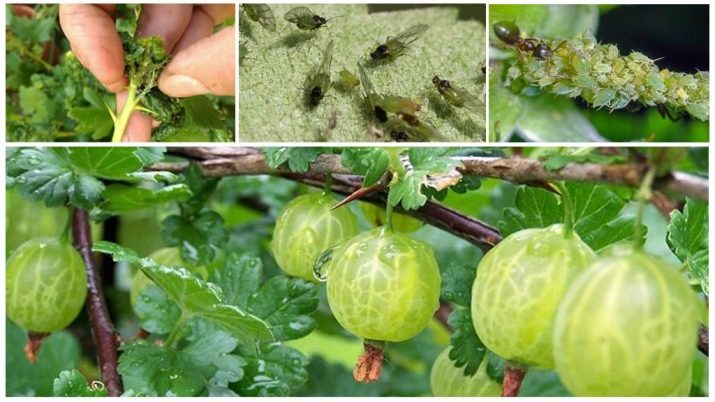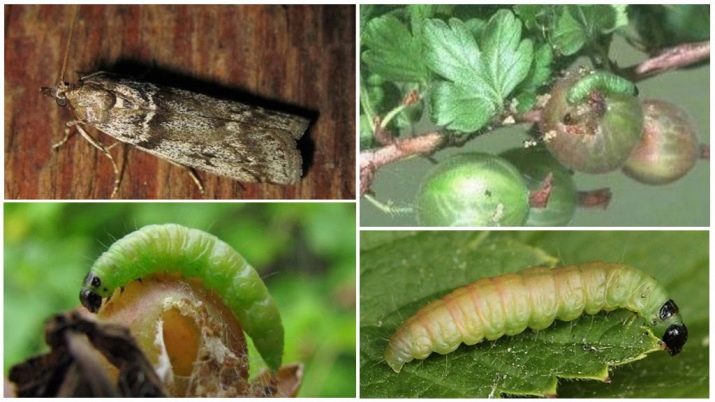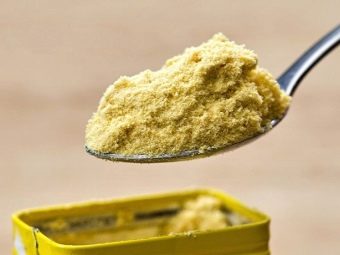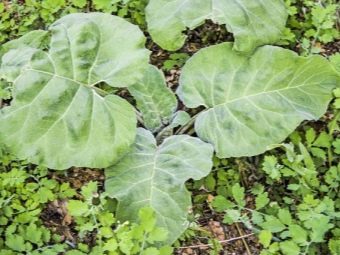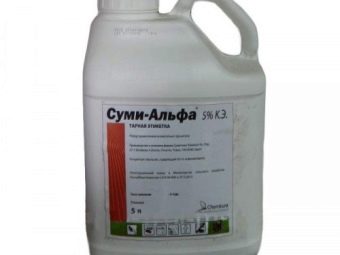How to deal with caterpillars on gooseberry?
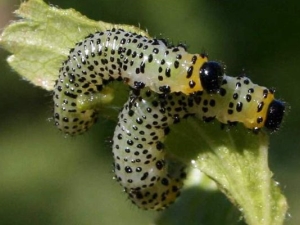
Attacks of phytophagous pests in the larvae stage are a problem that is familiar to every gardener and gardener. Perennial fruit shrubs, including gooseberries, are especially vulnerable to leaf-eating insects. If time does not take action, the hordes of voracious caterpillars will cause irreparable damage to landings.
They not only destroy the green parts of plants, because of which the synthesis of chlorophyll is disturbed, but also gnaws the insides of the fruit. In such cases, the quality and abundant harvest of striped berries can no longer count. We will find out how to deal with these harmful creatures with the help of agrochemicals and proven folk remedies.
Major pests
Leaf-eating insects are for the most part dangerous to plants. Caterpillars tend to damage the integumentary tissues of the leaves to feast on nourishing cell sap. This provokes disturbances in the natural processes of photosynthesis, as a result of which the leaf blades curl, the green mass dries out, and the plants often die.
For wintering, pests build themselves nests of fallen leaves, hide under the old bark of trees or bury themselves in the upper layers of the soil. With the advent of heat, they become more active and move to green spaces, developing vigorous activity, which negatively affects the yield.
The mass invasion of butterfly larvae can deprive a gardener of half of the crop, and in some cases, losses reach 80-90%. Let's get acquainted with the most common types of harmful caterpillars in garden plots, which are the main enemies of gooseberries.
Peppered moth
The peppered butterflies have a white-yellow color with black splashes. In the spring, the colonies of its caterpillars cause a lot of trouble to summer residents, destroying young leaves with buds on currant and gooseberry bushes. Pests overwinter under fallen leaves, waking up in spring at t + 19.21 ° C.
When berry bushes fade away, which usually occurs in June, the caterpillars turn into pupae, attaching themselves to the leaves of the web. The appearance of butterflies falls in the middle of summer. Mature individuals lay eggs of 250-300 pieces on the back of the leaf plates between the veins. After two weeks, a new generation of voracious larvae is born, continuing to harm green plantings.
Shoot Aphid
The sexually mature individual has a different color from greenish to gray-green and black. Adult pests violate the integrity of the leaves, shoots, fruits and suck the juice. Their activity leads to oppression and a strong weakening of the plants. The result of their mass invasion is a decrease in growth, productivity, cold resistance and a reduction in the life expectancy of fruit crops.
From the larvae no less damage. They feed on the juice, damaging the buds and shoots, which greatly inhibits the growth of plants. The tops of the young overgrown gooseberries are covered with twisted foliage. Inside such “twists” whole colonies of pests are localized. In the autumn, females lay eggs that stay for the winter.
The predisposing factor for the mass emergence of a shoots aphid is the early spring warming, which in many regions falls in mid-April.
If the caterpillars on the gooseberry bushes ate most of the green mass, and the affected young shoots stopped growing, then it is useless to wait for the next harvest season.
Gooseberry firing pin
It is one of the most dangerous pests for the stone-heel family that includes currants and gooseberries. This pest has a catchy wing color - on a dark gray and white striped background, a brown round spot is clearly visible, located in the middle.
When the gooseberry blooms massively, butterflies, having chosen the shrub flowers, make masonry in them. If there are no flowers, they will use the underside of young leaves for these purposes, and for the belated clutches - the ovary.One female is able to lay about 170-200 eggs.
At the end of the week, thousands of caterpillars of a whitish-yellow color appear from them. They live and feed in the ovaries. The caterpillar tracks are strikingly voracious. Each pest completely gnaws at least 10 fruits and eats juicy leaves, enveloping them with cobwebs. It is easy to imagine how much damage the gooseberry causes massive attacks of these insects.
Shrubs, on which they grabbed a large number of leaves and berries, begin to rot, dry and actively shed the remaining foliage. Landings subjected to attacks of pests, covered with sticky excrement and cobwebs, look pretty bad. Wintering place for pupae is near-trunk circles of bushes. They climb to a depth of 4-6 cm, entangle themselves with spider cocoons and hibernate.
Sawflies
The species diversity of these flying insects numbers over 5,500 specimens.
The yellow sawfly is interested not only in gooseberries, but also in currants. It is quite easy to recognize it by the head of black color and bright yellow paws on a small body 0.6-0.8 cm long. For wintering it is arranged in the upper layers of the soil and turn into a cocoon. With the advent of spring makes laying on the leaves, which is his main task in life. Having executed it, the sawfly dies.
Insects are dangerous in the stage of adult lobster larvae, which destroy the green mass at high speed and in record time. They make a lot of holes on the surface of the leaf plates, and then they eat them all up to the veins. As a result, the fruits are formed small, start to dry and fall prematurely, and sometimes the affected shrub, in general, does not bear fruit. It has been established that it takes only 1.5-2 weeks to destroy all the leaves from one bush of the caterpillar colony.
The danger of planting is also a pale-legged species of sawfly. This is a green caterpillar with a brownish spot on the head. Its appearance contributes to steady hot and dry weather. This species with no less pleasure destroys the green parts of plants, gnawing the leaves to veins. Three generations of insects have time to develop throughout the season from the moment of foliage formation to the period of full fruit formation.
Red currant suffers from the first, as it is ahead of the gooseberry in terms of budding. From the second - gooseberry bushes, while the caterpillars often go to the black currant bushes. And from the third - the whole gooseberry, which is within the reach of pests. They prefer to hibernate in old grass or under fallen leaves.
Willow pseudo-shield
It parasitizes gooseberry bushes, currants, raspberries. A small sucking pest up to 0.5 cm in size impresses with its ability to disguise thanks to its scaly protective shield. Due to the resemblance of the shell with wood bark, the insect is rather difficult to discern among the greenery.
His main occupation is the exhaustion of the cell juice of fruit crops. The harmful flora of this species is characterized by the release of sticky honeydew, which attracts saprophytes as a nutrient medium. When they multiply, black scurf forms on the surface of the bushes, due to which the plants stop eating and breathing normally.
Larvae hibernate in cracks of bark. With the arrival of spring, when the sap flow begins, they settle on the branches, leaves and shoots. They are distinguished by a high speed of propagation, therefore, often these creatures cover all the bark on the branches of shrubs.
How to fight folk remedies?
When shrubs bloom and fruits form on them, the use of pesticides can harm plantings. Therefore, it is recommended to control pests during this period by popular methods.
We list the most effective means.
- Table vinegar. A solution is prepared from it at the rate of 100 ml of vinegar per 20 liters of water. The liquid is poured into the sprayer tank and in the evening hours they conduct foliar treatment of the bushes.
- Mustard powder. To get rid of harmful insects will help the infusion: 220 g of dry mustard dissolved in 10-12 liters of water and incubated for 4-5 days. Then add pure water at the rate of 1: 5 to it. Before treating the plantations, the liquid is mixed with a solution of soap shavings, due to which it will stick well to the leaves.
- Ammonia. Spraying liquid is prepared in a ratio of 20 ml of 10% aqueous ammonia solution to 20 liters of water. Shrubs are allowed to handle throughout the growing season.
- Pharmaceutical camomile. For the preparation of infusion will need 1 kg of dried leaves with inflorescences. It is necessary to boil water, pour dry raw materials and leave to infuse for half a day. Before use, add water in a ratio of 1: 3 and liquid soap.
Processing is best done on the fifth day of flowering bushes, since by this time they already have time to bloom several flowers.
- Pyrethrum ordinary. If gooseberries are attacked by flagella, Persian chamomile powder will help. It is mixed with sifted road dust, using a mixture to pollinate affected plants. This should be done twice with a 5-day interval between treatments.
- Wood ash. When sawfly larvae devour the foliage, the bushes need to be thoroughly moistened, and then spray the ashes on them. Powder planting will have to repeatedly, as the rain quickly washes away the powder from the foliage.
- Tansy ordinary. Planting this grass between shrubs will create a natural protective barrier that repels caterpillars. One plant is planted on 5-6 gooseberry bushes.
- Burdock The bucket is half filled with chopped burdock, water is poured in and insisted for two days. The mixture is filtered, add a solution of soap chips 50 ml, then used to treat bushes from aphids. Instead of burdock leaves, also suitable potato or tomato tops, spurge and dope.
Fight with drugs
In the early spring period, berry bushes can be treated with chemical preparations. Before the onset of technical ripeness of fruits, toxic components contained in the composition of agrochemicals, will have time to evaporate without harm to the crop.
Here is a list of drugs that trust gardeners.
- Fozalon. Refers to organophosphate insecticides enterocontact action. It has a high initial toxicity, creates a deep effect, maintains high efficiency of plant protection in conditions of low temperatures up to + 12 ° C. Adults and larvae die within two days after using the drug. Not phytotoxic.
- Aktara. High-speed, highly effective insecticidal agent, which is sprayed with the vegetative part of the plants and treated soil. Thanks to the active substance thiamethoxam, the drug does not accumulate in the soil. Regular use allows the entire season to control any harmful flora.
- "Decis". This enteric contact insecticide is resorted to with the help of sudden massive attacks of the most harmful insects. He instantly kills any pest from flies, aphids and butterflies to sawflies, butterflies and beetles, with the exception of the Colorado who die within 4-5 minutes. Remains on the plants after the rain, the duration of protection - 14 days from the time of treatment. For one application, migratory insects are exterminated in whole batches.
- Kinmiks. Insecticidal drug based on beta-cypermethrin, low toxic household poison of a wide spectrum of action. Destroys sexually mature individuals and larvae. The active substance enters the digestive organs, paralyzing insects, as a result of which they die.
- Sumi Alpha. Highly effective insecticidal agent, part of the pyrethroid group. It has a broad insecticidal and high lethal activity, repellent, anti-fatigue, paralyzing effect. The drug is allowed to be used in combination with various types of fungicides or insecticides. The duration of protection is 14 days.
Spraying berry bushes with poisons is extremely effective and ensures the death of the vast majority of caterpillars. However, this method has disadvantages:
- the use of such drugs can cause intoxication if a person eats the processed fruit;
- It is necessary to constantly change insecticides, since pests eventually develop resistance to the active substances in their composition.
Therefore, it is recommended to give preference to the latest generation of drugs that are guaranteed not to cause resistance in the larvae. Gardeners also advise alternating treatments with agrochemicals using plant infusions.
On the measures of protection of gooseberries from caterpillars, see the following video.




